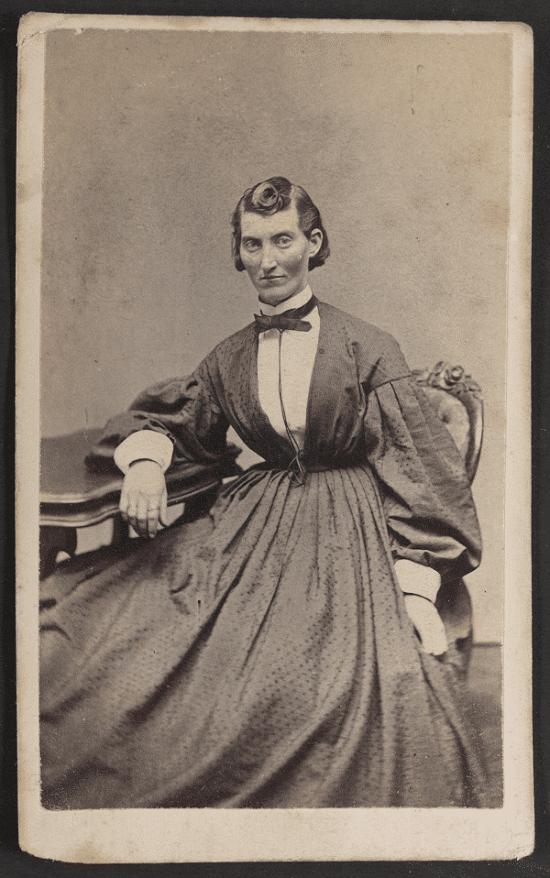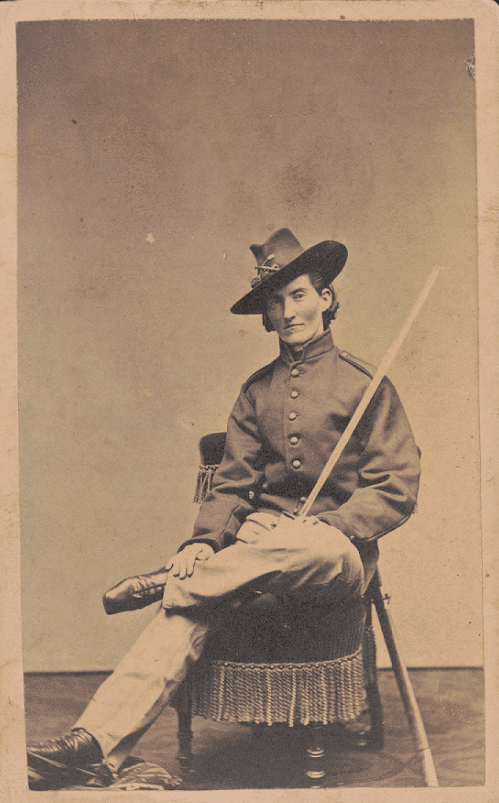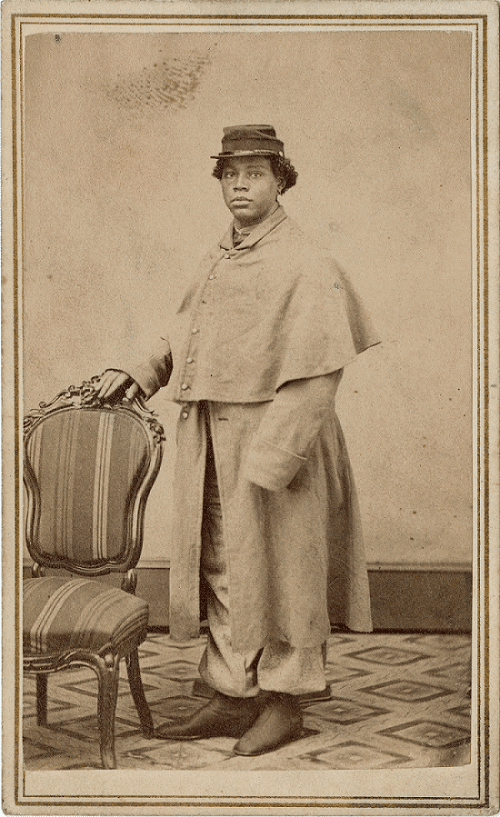Background
Historians have identified about 400 women who disguised themselves as men and enlisted to fight in the American Civil War. They found army records of soldiers who were discovered to be women during their service. Historians also found pension cases for women who revealed themselves after the war ended. It is possible that the number of women soldiers was much higher, since historians only have records for those who were discovered or revealed themselves.
After the war, not every person assigned female at birth returned to life as a woman. Albert D. J. Cashier took the opportunity to establish a new identity as a male citizen. The medical doctor of his unit saw no reason to out a citizen who performed their duty admirably and kept Albert’s transition a secret from the rest of his unit.
About the Image
The first set of photographs shows Frances Clayton in and out of her Union soldier uniform. At the outbreak of the war, Frances and her husband joined the Union Army together, enlisting in different states to make sure Frances was not caught. Frances took the name Jack Williams during her service. After 22 months of fighting side-by-side with her husband, he was killed at the Battle of Stones River. Frances later recalled stepping over her husband’s dead body while trying to escape a Confederate charge. Shortly after the battle, Frances revealed her true identity and the army discharged her. She then traveled the country telling her story to newspapers and lobbying army and government officials to give her the pensions and bounties she and her husband were owed. It is unknown whether she ever received her pension.
The second set of photographs is more mysterious. They clearly depict the same Black woman in and out of Union soldier dress. The photos are included in an album presented to Major M.S. Euan, but there is no identifying information about the subject, or where and why she fought. Her photographs stand as evidence that Black women disguised themselves as men to fight in the Civil War.
Vocabulary
- bounty: A bonus payment for special services.
- Confederate: Relating to the group of states that seceded from the United States before the Civil War in order to preserve slavery.
- enlisted: Joined the armed forces.
- pension: A sum of money regularly paid to a former soldier for life in recognition of service.
- Union: The name for the states that remained a part of the United State during the Civil War.
Discussion Questions
- Why did women have to disguise themselves as men to fight in the Civil War?
- What dangers did women face when they disguised themselves as soldiers?
- What do these photograph sets tell us about their subjects?
- Why is it important to acknowledge the presence of women fighters in the war?
Suggested Activities
- Include these photographs in lessons about the lives and experiences of Civil War soldiers.
- Combine these photographs together with the life story of Loreta Janeta Velázquez and Harriet Tubman for a larger lesson about women soldiers in the American Civil War.
- Some women joined the Union Army in non-combat roles. To learn more, read the life story of Susie Baker King Taylor.
- For a lesson on women warriors throughout American history, combine these resources together with any of the following:
Loreta Janeta Velázquez, Harriet Tubman, Margaret Corbin, Weetamoo, Women in the Army, Toypurina, and Nanyehi Nancy Ward. - For a larger lesson about the ways women contributed to Union and Confederate war efforts during the American Civil War, teach these resources together with any of the following: Life Story: Sojourner Truth, Nursing, Sanitary Fairs, Women’s War Production, Smuggling, Scenes from the Confederate Home Front, Changing the Rules of War, Life Story: Elizabeth Blackwell, Life Story: Emily Jane Liles Harris, Life Story: Loreta Janeta Velázquez, Life Story: Harriet Tubman, Life Story: Susie Baker King Taylor, Swearing Loyalty.
Themes
POWER AND POLITICS; AMERICAN IDENTITY AND CITIZENSHIP










